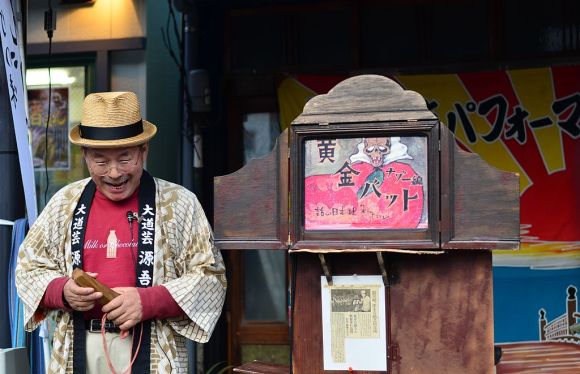
When I first came to Japan, I noticed students using story boards frequently at school. They drew pictures on cardboard with crayon or marker, to assist in skits, plays and telling Japanese folktales. Story boards were especially helpful in English classes because the illustrations helped the audience understand the less-than-perfect translations from Japanese to English. Furthermore, the students could write their translations on the back of each board and narrate rather than memorizing it in English first.
Little did I know that what these students were doing was performing an updated version of a traditional Japanese storytelling format called kamishibai, believed to be the precursor to Japan’s manga and anime.
Find out where Japan’s first superheroes came from and which manga and anime started with from this original, unassuming art form called kamishibai.
The beginnings of written storytelling in Japan started with scrolls, called emakimono. These picture scrolls were read from right to left. The two most famous scrolls are the “Tale of Genji” by Murasaki Shikibu (written around the year 1000) and “Choju Giga”(“Scrolls of Frolicking Animals”) by Toba Sojo, a Buddhist priest (1053-1140). Both of these emakimono are designated National Treasures.
▼”Tale of Genji” depicted on a scroll with a combination of illustrations and handwritten text (from 1130).
▼Rabbits and frogs play in this rendition by Masakazu Yoshizawa of one section of the “Choju Giga.” The original scroll was drawn on one piece of paper 11 meters long (36 ft).
Kamishibai originated in Buddhist Temples, where individual story panels were used to teach stories with moral lessons. Pinpointing exactly when kamishibai started is difficult, but it seems to have developed as a way to make the narratives more convenient and more accessible. By using illustrated boards instead of scrolls, orators could present their stories accompanied by colorful illustrations to a large audience while having their hands free to add antics. Kamishibai narrators used a wooden box with a framed opening (making it look like a small stage) in which the paper cards were inserted.
▼A kamishibai storyteller tells the tale of Ogon Bat which debuted as a kamishibai and later went on to become a manga and anime.
When the narrator was ready to move on to the next scene, he would take out one card which would, in turn, expose the next.
▼A kamishibai storyteller with a stage on the back of a bicycle.
▼He pulls out each illustrated card as he finishes that part of the story.
In the 1920s, when times were tough and many Japanese people didn’t have jobs, becoming a traveling orator was an easy way to make some money. They would bicycle from town to town narrating stories for free to the many children who would gather around them. How did they make money? By selling candy to the children first! And you thought education was free.
It is easy to see how this performance-based paper theater, which relied on hand-made boards drawn well enough to hold children’s attention, would be a natural precursor to Japan’s manga and anime. The traveling picture shows, visiting the same towns each week, provided new episodes of the children’s favorite characters. Some of the popular kamishibai characters were Ogon Bat (Ichiro Suzuki and Takeo Nagamatsu 1930) and Prince of Gamma (early 1930s), who became Japan’s first superheroes.
It was later, in post-war Japan, that manga artists such as Osamu Tezuka (Astro Boy) and Machiko Hasegawa (Sazae-san) became popular and these artists’ works were adapted to anime.
▼A modern-day kamishibai artist at Kiyomizu Temple, Kyoto
Nowadays you can see kamishibai in computerized form, but it’s hard to find English versions. So today I’d like to introduce you to Hayato and Aoi Tokugawa, a husband and wife team who create English kamishibai. Aoi does most of the artwork, drawing the characters and backgrounds in analog format. Hayato writes the words to the stories and puts them into a computerized format so that we can enjoy kamishibai on our own computers.
Here is their story “Komachiki: the legend of the flying pig.” It’s the tale of a very cute pig who exaggerates a bit too much. You’ll notice it doesn’t stray too far from the morality-based stories of the original kamishibai at the Buddhist temples. Now everybody, shhhhh, be quiet. The show is about to begin!
Once upon a time, so very, very long ago, on a very average farm, in the very average village of Mibu, on the outskirts of Kyoto, lived a young pig named Komachiki. And, just like the other pigs on the farm, Komachiki was…well…average. Not that there is anything wrong with being average. Sometimes it makes life a whole lot less complicated, simple if you will; and thus, a whole lot more enjoyable. But Komachiki didn’t see it that way.
Even at a very young age he would often say to himself, “Average is boring!” and promised himself that when he grew up, he would be anything but average. “Average is boring,” he would often say to himself again and again! But life doesn’t necessarily work that way. Being more than average requires…well…a lot of effort and a whole lot more. Lots of people, no matter how hard they try, simply remain average and are very happy with that. But no matter what Komachiki tried, and no matter how hard he tried, he really was just an average pig — he knew it and he hated it.
So he started making up little stories that he would tell himself, to make himself feel better and to help convince himself that he really was above average.
Now, this may have been fine when he was a piglet (but it’s really not ever good) and then when he grew older, he began telling the stories to the other pigs, so that they would think he was above average. For example, one day two of the elder pigs on the farm, Mr. Otaka and Mr. Ito, were playing a game of go when Komachiki proudly walked up to them and announced that, “Wow! Farmer Izumi just asked me to help him plant rice, which of course I did, and when we were done, he said ‘Komachiki, you are a very good rice planter indeed. I would be so pleased if you will help me every planting season and perhaps you will be so kind as to help me with the harvest.’”
Mr. Ito and Mr. Otaka simply nodded their heads and kept right on playing go. Satisfied that he had impressed his neighbors, Komachiki proudly strode off to tell some other people how above average he was. Of course, what really happened was that farmer Izumi was planting rice, but caught Komachiki frolicking in the mud and tearing up the plants he had just planted. What he really said was that Komachiki wasn’t good for much of anything and it would be fine with him if the pig went away and never came back! Just a bit different story I think.
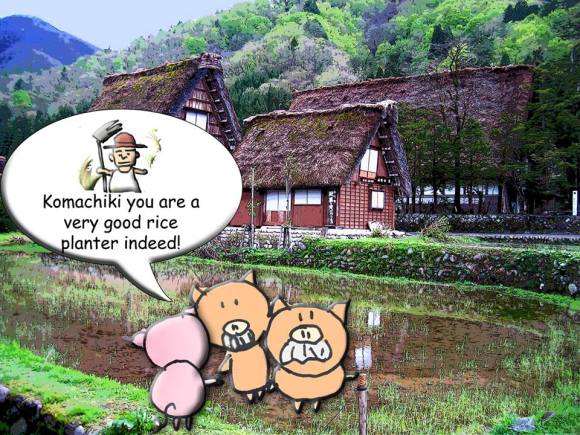
“Oh my! My lovely apples!” shrieked Mrs. Izumi! “I was going to make my sweet husband a sweet pie for his enjoyment after working so hard in the fields. What will I do now? They are ruined! Perhaps I can save just enough to make him some apple sauce…get out of here you terrible pig!”
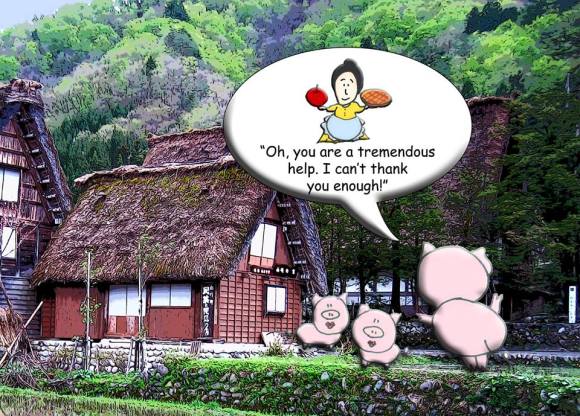
And so it went. The next year, Komachiki would tell anyone who would listen (or seemed to listen anyway) how so-and-so had asked him to consult on a project in the barnyard, or how he had caught Mr. Izumi making a mistake and how he, Komachiki, had immediately corrected it. Obviously he was a very intelligent pig and thus — well above average. But as you might expect, folks grew rather weary of hearing all these tall tales from Komachiki about Komachiki; but people, as I’m sure you know, try to be tolerant and hate to hurt someone else’s feelings…even if it may be for their own good.
Yet, the fat little pig was still not satisfied with himself. He decided that what he really needed was to do something that no pig had ever done before — something so stupendous that they would never, ever again think he was average. He thought and he thought and then one day it came to him. At the front of the farm was a magnificent cedar tree, taller than any of the other trees in the neighborhood. What he would do, for all to see, would be to climb to the top of the tree (or as high as he could go) in front of everybody. Then they would have to admit that he was above average.
So, one bright Saturday morning, he called all the pigs and all the other farm animals together at the giant tree and proudly proclaimed that he would do what no pig had ever done before — climb to the top of the tree. And with that he started to climb. His little fat arms and his little fat legs were shaky to say the least and grew more so the higher up he went. In the meanwhile, people looked at each other; nodded, whispered — this would come to no good end for certain.
Well, Komachiki showed them all! He did climb almost all the way to the top, with the people below cheering him on, and there on the last branch that could possibly support his porky weight, he stood with his arms stretched over his head, shouting to those below to look at the wonderful thing he had done. Well, people did look, and they saw the climbing pig standing near the very top of the tree; but they also saw something he didn’t see. A small dot in the distant sky, behind the pig, began to grow larger and larger until everyone could see that a great eagle was swooping down from the sky in the direction of Komachiki.
And before anyone could shout a warning, the eagle darted through the air and snatched Komachiki up in his massive talons and flew away.
No one ever saw Komachiki again; and I’m told, not so many really cared anyway!
And there is a saying, really almost another legend in Kyōto that says, when the clouds, and the sun, and the wind are just right, you can see Komachiki dancing high up in the air — “When pigs dance over Kyōto,” meaning that something is pretty impossible; and not unlike that old Western saying, “When pigs fly.”
And that’s how the saying, which perhaps you have heard, that even a pig who really can’t climb trees can do it when he is cheered on, came from. Of course that is all nonsense, but old folks like to tell the story and then wink an eye at its conclusion.
There is another saying also which grew out of this story, “Only crazy people and smoke want to go up to high places like a climbing pig,” and I tend to agree with that.
Does Komachiki remind you of anyone? Hmm, Mamoru Samuragochi and Ryutaro Nonomura come to mind. Who’s your favorite “flying pig?” Let us know in the comments section!
But before we leave, check out this storytelling by Kunitachi Kamishibai!
Source: Komachiki text and illustrations © Copyright 2014 and published with the permission of Aoi Tokugawa, Hayato Tokugawa, and the Kitty Mafia Art Worx (™)

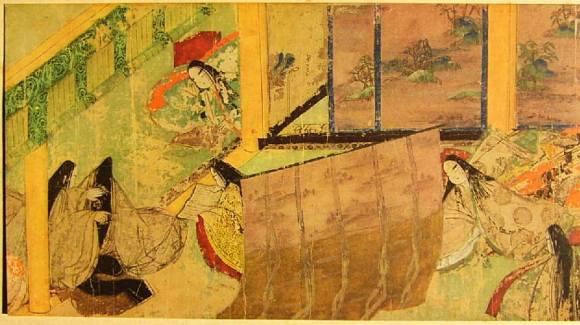

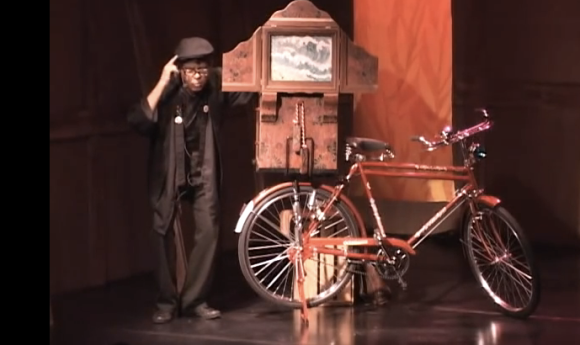
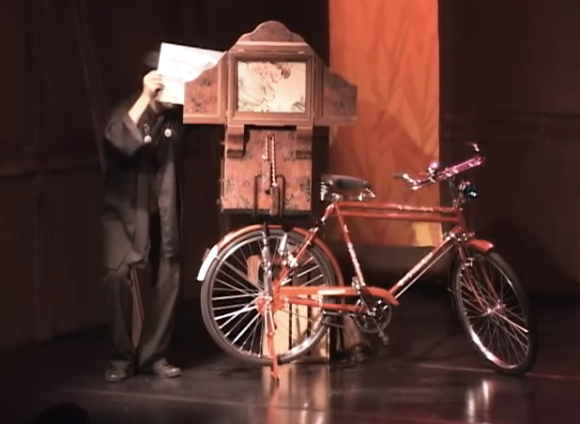
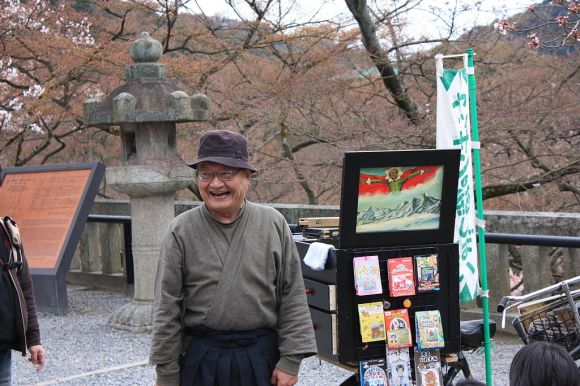
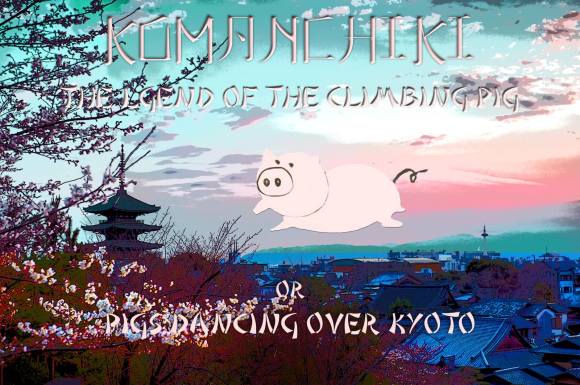

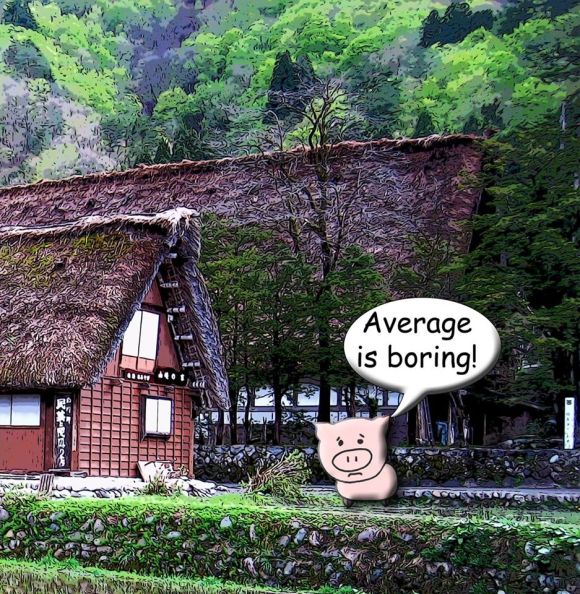
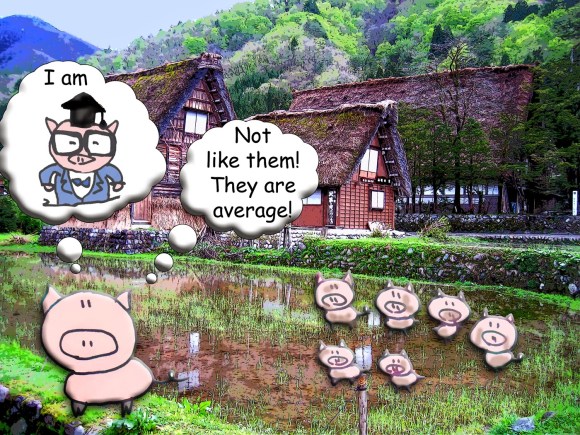
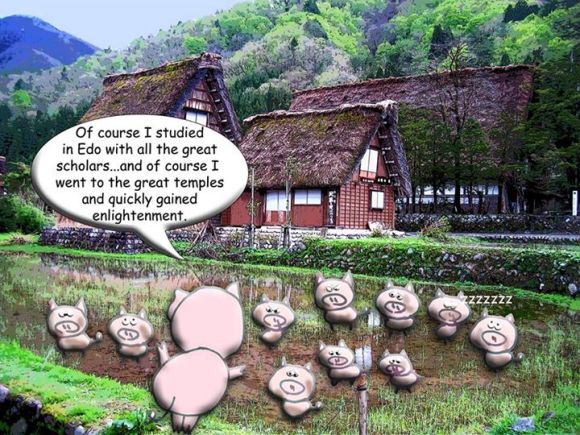
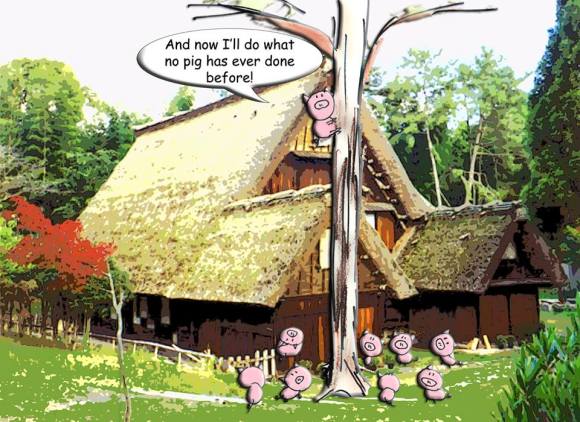
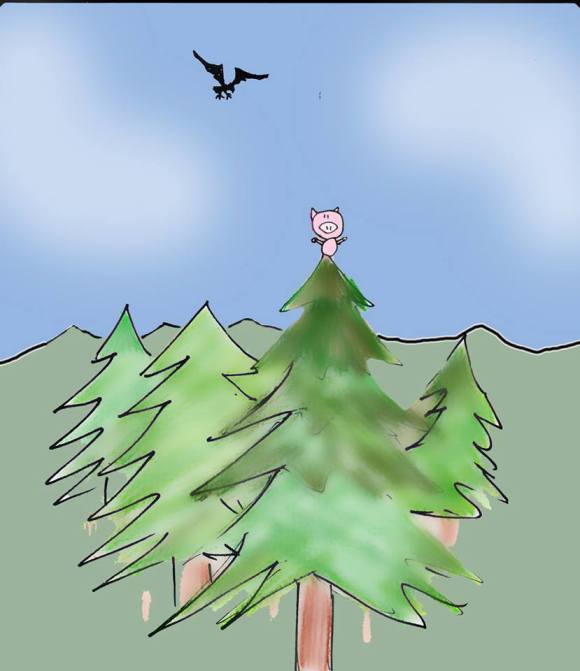
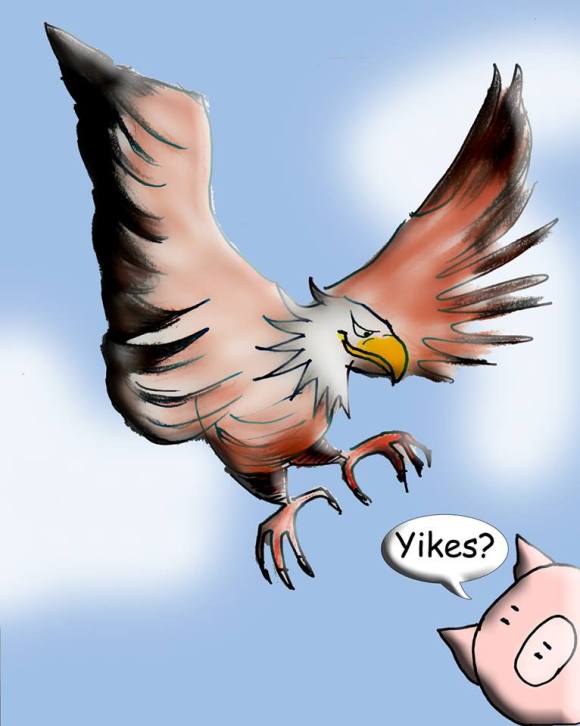
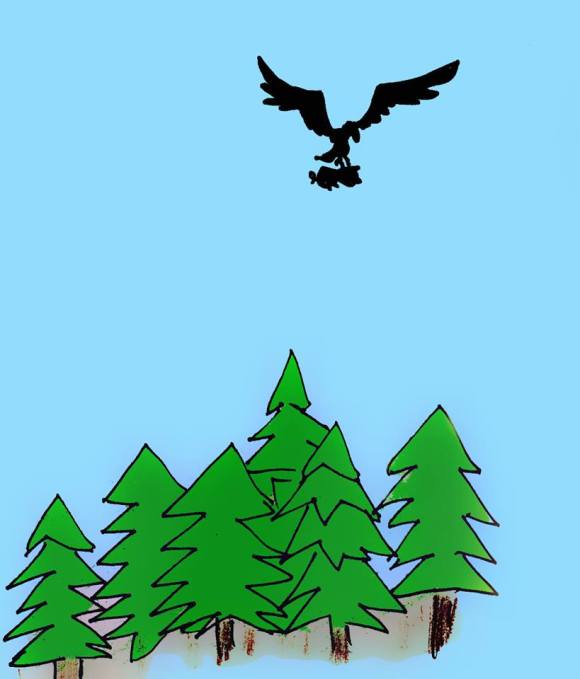
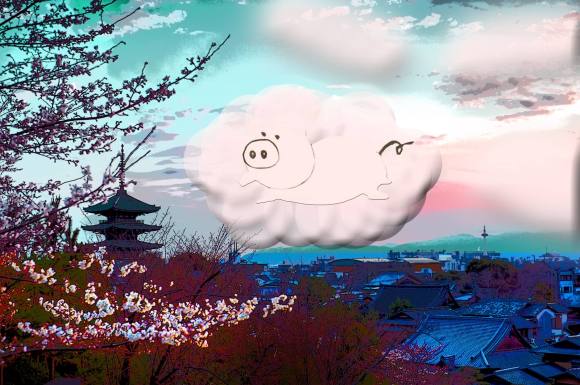
 Japan’s first-ever micro pig cafe opens in Tokyo 【Pics & Video】
Japan’s first-ever micro pig cafe opens in Tokyo 【Pics & Video】 Mipig Harajuku: We visit the new micro pig cafe in Tokyo
Mipig Harajuku: We visit the new micro pig cafe in Tokyo Studio Ghibli releases 250 more free-to-download/use images from five films, and Totoro is here!
Studio Ghibli releases 250 more free-to-download/use images from five films, and Totoro is here! Customer gets an unexpected surprise when Amazon suggests additional items to purchase
Customer gets an unexpected surprise when Amazon suggests additional items to purchase Ready, set… woomy! Sanrio new character collaboration poll starts, featuring Splatoon 2 and more
Ready, set… woomy! Sanrio new character collaboration poll starts, featuring Splatoon 2 and more Beautiful new Final Fantasy T-shirt collection on the way from Uniqlo【Photos】
Beautiful new Final Fantasy T-shirt collection on the way from Uniqlo【Photos】 Disney princesses get official manga makeovers for Manga Princess Cafe opening in Tokyo
Disney princesses get official manga makeovers for Manga Princess Cafe opening in Tokyo Foreign English teachers in Japan pick their favorite Japanese-language phrases【Survey】
Foreign English teachers in Japan pick their favorite Japanese-language phrases【Survey】 Randomly running into a great sushi lunch like this is one of the best things about eating in Tokyo
Randomly running into a great sushi lunch like this is one of the best things about eating in Tokyo Osaka’s creepy cute mascot speaks for first time, adds more fuel the creepy OR cute debate【Video】
Osaka’s creepy cute mascot speaks for first time, adds more fuel the creepy OR cute debate【Video】 Is the new Shinkansen Train Desk ticket worth it?
Is the new Shinkansen Train Desk ticket worth it? Extreme budget travel! Can you do a quick trip to Angkor Wat with 50,000 yen (US$334)? – Part 1
Extreme budget travel! Can you do a quick trip to Angkor Wat with 50,000 yen (US$334)? – Part 1 Hey, Japanese taxi driver! Take us to your favorite restaurant in Tsuruga City!
Hey, Japanese taxi driver! Take us to your favorite restaurant in Tsuruga City! Why are the Los Angeles Dodgers wearing the caps from Nagoya’s professional baseball team?
Why are the Los Angeles Dodgers wearing the caps from Nagoya’s professional baseball team? A Gintama fan’s emotional 19-year journey to buy a proper Lake Toya bokuto wooden katana【Pics】
A Gintama fan’s emotional 19-year journey to buy a proper Lake Toya bokuto wooden katana【Pics】 We try out “Chan Ramen”, an underground type of ramen popular in the ramen community
We try out “Chan Ramen”, an underground type of ramen popular in the ramen community New Studio Ghibli bedding sets are cool in all senses of the word
New Studio Ghibli bedding sets are cool in all senses of the word Our Japanese reporter visits Costco in the U.S., finds super American and very Japanese things
Our Japanese reporter visits Costco in the U.S., finds super American and very Japanese things New Pokémon cakes let you eat your way through Pikachu and all the Eevee evolutions
New Pokémon cakes let you eat your way through Pikachu and all the Eevee evolutions There’s a park inside Japan where you can also see Japan inside the park
There’s a park inside Japan where you can also see Japan inside the park Japanese convenience store packs a whole bento into an onigiri rice ball
Japanese convenience store packs a whole bento into an onigiri rice ball Hanton rice — a delicious regional food even most Japanese people don’t know about, but more should
Hanton rice — a delicious regional food even most Japanese people don’t know about, but more should Final Fantasy, Kingdom Hearts, and Dragon Quest pet product line announced by Square Enix
Final Fantasy, Kingdom Hearts, and Dragon Quest pet product line announced by Square Enix Studio Ghibli releases Kiki’s Delivery Service chocolate cake pouches in Japan
Studio Ghibli releases Kiki’s Delivery Service chocolate cake pouches in Japan Japan’s bone-breaking and record-breaking roller coaster is permanently shutting down
Japan’s bone-breaking and record-breaking roller coaster is permanently shutting down New definition of “Japanese whiskey” goes into effect to prevent fakes from fooling overseas buyers
New definition of “Japanese whiskey” goes into effect to prevent fakes from fooling overseas buyers Foreign passenger shoves conductor on one of the last full runs for Japan’s Thunderbird train
Foreign passenger shoves conductor on one of the last full runs for Japan’s Thunderbird train Kyoto bans tourists from geisha alleys in Gion, with fines for those who don’t follow rules
Kyoto bans tourists from geisha alleys in Gion, with fines for those who don’t follow rules Studio Ghibli unveils Mother’s Day gift set that captures the love in My Neighbour Totoro
Studio Ghibli unveils Mother’s Day gift set that captures the love in My Neighbour Totoro Domino’s Japan now sells…pizza ears?
Domino’s Japan now sells…pizza ears? Toyota built a life-sized Miraidon Pokémon and are letting people test drive it this weekend
Toyota built a life-sized Miraidon Pokémon and are letting people test drive it this weekend New Japanese KitKat flavour stars Sanrio characters, including Hello Kitty
New Japanese KitKat flavour stars Sanrio characters, including Hello Kitty Sales of Japan’s most convenient train ticket/shopping payment cards suspended indefinitely
Sales of Japan’s most convenient train ticket/shopping payment cards suspended indefinitely Sold-out Studio Ghibli desktop humidifiers are back so Totoro can help you through the dry season
Sold-out Studio Ghibli desktop humidifiers are back so Totoro can help you through the dry season Japanese government to make first change to romanization spelling rules since the 1950s
Japanese government to make first change to romanization spelling rules since the 1950s Ghibli founders Toshio Suzuki and Hayao Miyazaki contribute to Japanese whisky Totoro label design
Ghibli founders Toshio Suzuki and Hayao Miyazaki contribute to Japanese whisky Totoro label design Doraemon found buried at sea as scene from 1993 anime becomes real life【Photos】
Doraemon found buried at sea as scene from 1993 anime becomes real life【Photos】 Tokyo’s most famous Starbucks is closed
Tokyo’s most famous Starbucks is closed One Piece characters’ nationalities revealed, but fans have mixed opinions
One Piece characters’ nationalities revealed, but fans have mixed opinions We asked a Uniqlo employee what four things we should buy and their suggestions didn’t disappoint
We asked a Uniqlo employee what four things we should buy and their suggestions didn’t disappoint Princesses, fruits, and blacksmiths: Study reveals the 30 most unusual family names in Japan
Princesses, fruits, and blacksmiths: Study reveals the 30 most unusual family names in Japan Studio Ghibli’s new desktop Howl’s Moving Castle will take your stationery on an adventure
Studio Ghibli’s new desktop Howl’s Moving Castle will take your stationery on an adventure Would you eat a pig-shaped fried pork cutlet?
Would you eat a pig-shaped fried pork cutlet? The most beautiful photo of Kyoto ever taken? Internet swoons over picture of traditional city
The most beautiful photo of Kyoto ever taken? Internet swoons over picture of traditional city You can find the happiest pigs in the world on “Pig Island”, and swim with them too!【Photos】
You can find the happiest pigs in the world on “Pig Island”, and swim with them too!【Photos】 We try eating insects — they don’t taste like chicken
We try eating insects — they don’t taste like chicken Two guinea pigs accidentally find love sharing a snack on November 11th “Pocky Day” 【Video】
Two guinea pigs accidentally find love sharing a snack on November 11th “Pocky Day” 【Video】 Goodbye katanuki? Japanese festival game may go extinct thanks to the pandemic
Goodbye katanuki? Japanese festival game may go extinct thanks to the pandemic Cute cat loves on its owner after he returns home… from the convenience store 【Video】
Cute cat loves on its owner after he returns home… from the convenience store 【Video】 Good Couples Day gets our Japanese writer thinking about international marriage differences
Good Couples Day gets our Japanese writer thinking about international marriage differences Our Japanese language reporter P.K. offers a spooky tale, advice to protect yourself from spirits
Our Japanese language reporter P.K. offers a spooky tale, advice to protect yourself from spirits We go to Kanazawa to meet Bao, the miniature pig who works in a pork restaurant【Video】
We go to Kanazawa to meet Bao, the miniature pig who works in a pork restaurant【Video】 【Lucky Bag Roundup 2018】Celebrate the Year of the Dog with Village Vanguard’s “Cat Lucky Bag 2”
【Lucky Bag Roundup 2018】Celebrate the Year of the Dog with Village Vanguard’s “Cat Lucky Bag 2” Twitter artist chronicles man’s tear-jerking revelation about father awhile eating ramen with son
Twitter artist chronicles man’s tear-jerking revelation about father awhile eating ramen with son Yokosuka’s Statue of Liberty gives the word liberty a whole new meaning
Yokosuka’s Statue of Liberty gives the word liberty a whole new meaning Creator of Japanese manga Bleach searches for fan to thank him for his dying message
Creator of Japanese manga Bleach searches for fan to thank him for his dying message Steamy Heinz Japan commercials urge married women to have affairs with handsome pig【Videos】
Steamy Heinz Japan commercials urge married women to have affairs with handsome pig【Videos】 “Sudden desire to eat ice cream may indicate cancer” – Author of book on the disease
“Sudden desire to eat ice cream may indicate cancer” – Author of book on the disease
Leave a Reply